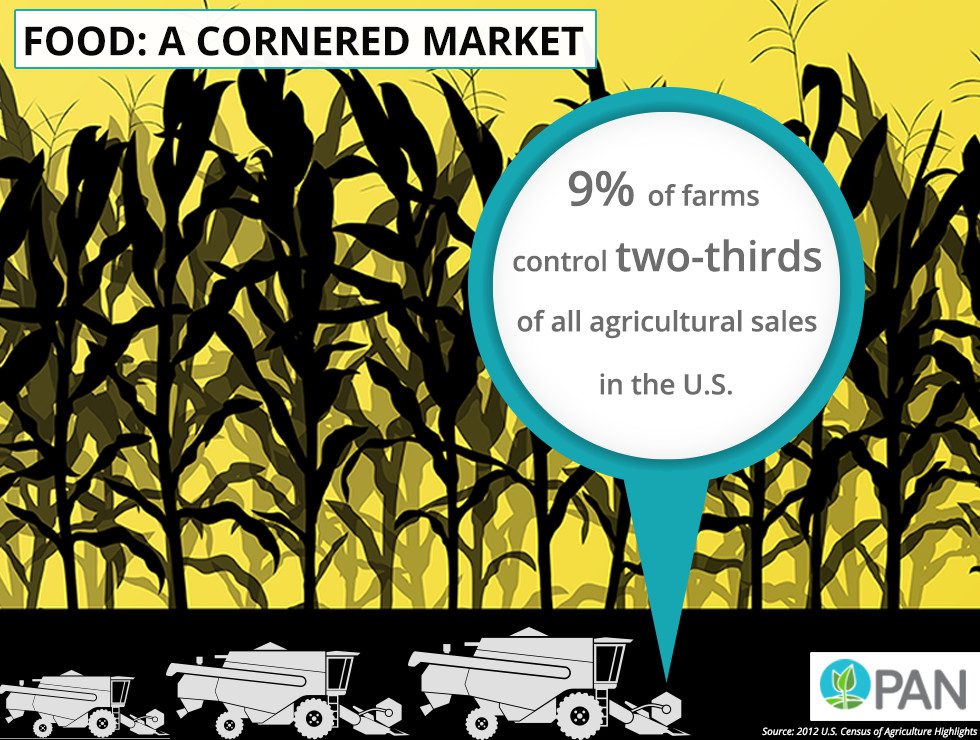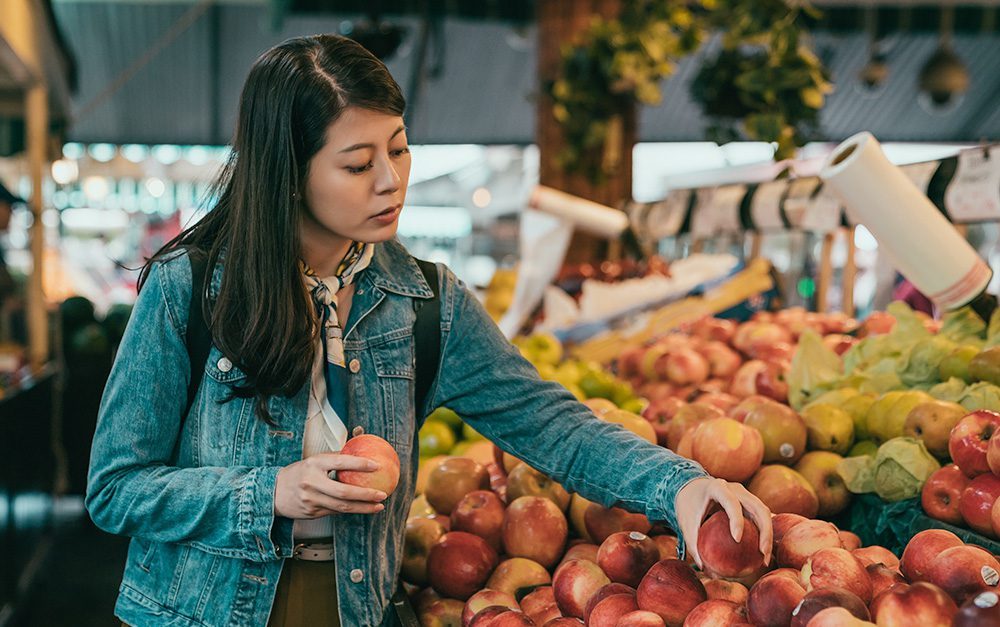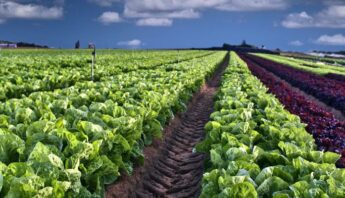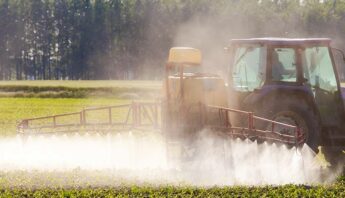Over the last half a century, democracy has been squeezed out of food production.
The industrialization of farming has left a slew of injustices in its wake, from agricultural pollution coming from pesticides and nitrates, to lower incomes and less autonomy for farmers and rural communities. We have also seen reduced access to fresh, healthy and nourishing food for families across the country.
But more and more, people see how our food is grown, distributed and prepared as a reflection of our values. In communities across the country, we are re-democratizing our food system.

Field to fork injustice
For the past six decades, industrial agriculture has treated the farm as a factory, with “inputs” (pesticides, fertilizers) and “outputs” (crops). The primary objective is increasing yields while controlling costs, usually by exploiting economies of scale — in the case of agriculture, this means large-scale, industrial monocropping.
This corporate approach to farming undermines a healthy food and farm economy, distances farmers from their craft and leaves consumers disconnected from their food supply. Most importantly, it fosters injustice up and down the food chain — and can’t be sustained.
Farmers lose income & control
Today, farmers and ranchers receive about 20 cents of every dollar spent on food — down from 44 cents back in 1950.
This kind of drop in income makes it hard to earn a living. Over 90 percent of U.S. farmers now rely on off-farm income to make ends meet, up from 54 percent in 1970 and 30 percent in 1930.
Industrial food and farming is so consolidated that consumers don’t see these lower prices at the grocery store. Agribusiness conglomerates like Cargill, Bayer (now merged with Monsanto) and Archer Daniels Midland (ADM) set prices at both ends of the food chain. When a few big buyers have such a tight hold over the market, farmers have no option but to follow instructions — often surrendering the right to make basic decisions about how their farm is run.
Food workers in poverty
The impacts of a corporate food system are felt well beyond the farm gate. Those who harvest, transport, sell, cook and serve food in this country are very likely to live in poverty, and often cannot afford the very food they pick, prepare and distribute.
Food workers across the U.S. share one thing in common: they are among the worst paid workers in an industry that creates some of the largest corporate profits.
The 2014 film Food Chains offers an excellent analysis of the disparities between workers and corporate agriculture powers, and places the realities of U.S. food workers in a global perspective.
Food & farming, reclaimed
The push to re-localize and democratize control over U.S. food and farming has gained tremendous momentum in recent years — and is a part of an increasingly vibrant global “food sovereignty” movement.
Communities around the world are building thriving food systems with, for and by the people. Just a few on-the-ground examples:
- Belo Horizonte, Brazil, “the city that ended hunger,” links urban consumers to small-scale farmers through municipal procurement;
- The U.S. Farm to School Network connects schools to local and regional farmers;
- Local Food Policy Councils are springing up from Des Moines to Los Angeles to Knoxville;
- In California’s Bay Area, the People’s Grocery is re-weaving community through urban agriculture, and Occupy the Farm is reclaiming agricultural commons for the people.
What unites these and many other efforts is a shared set of priorities: feed people, and let farmers work the land. What results is more democratic decision-making about food and agriculture, less hunger and revitalized communities.







